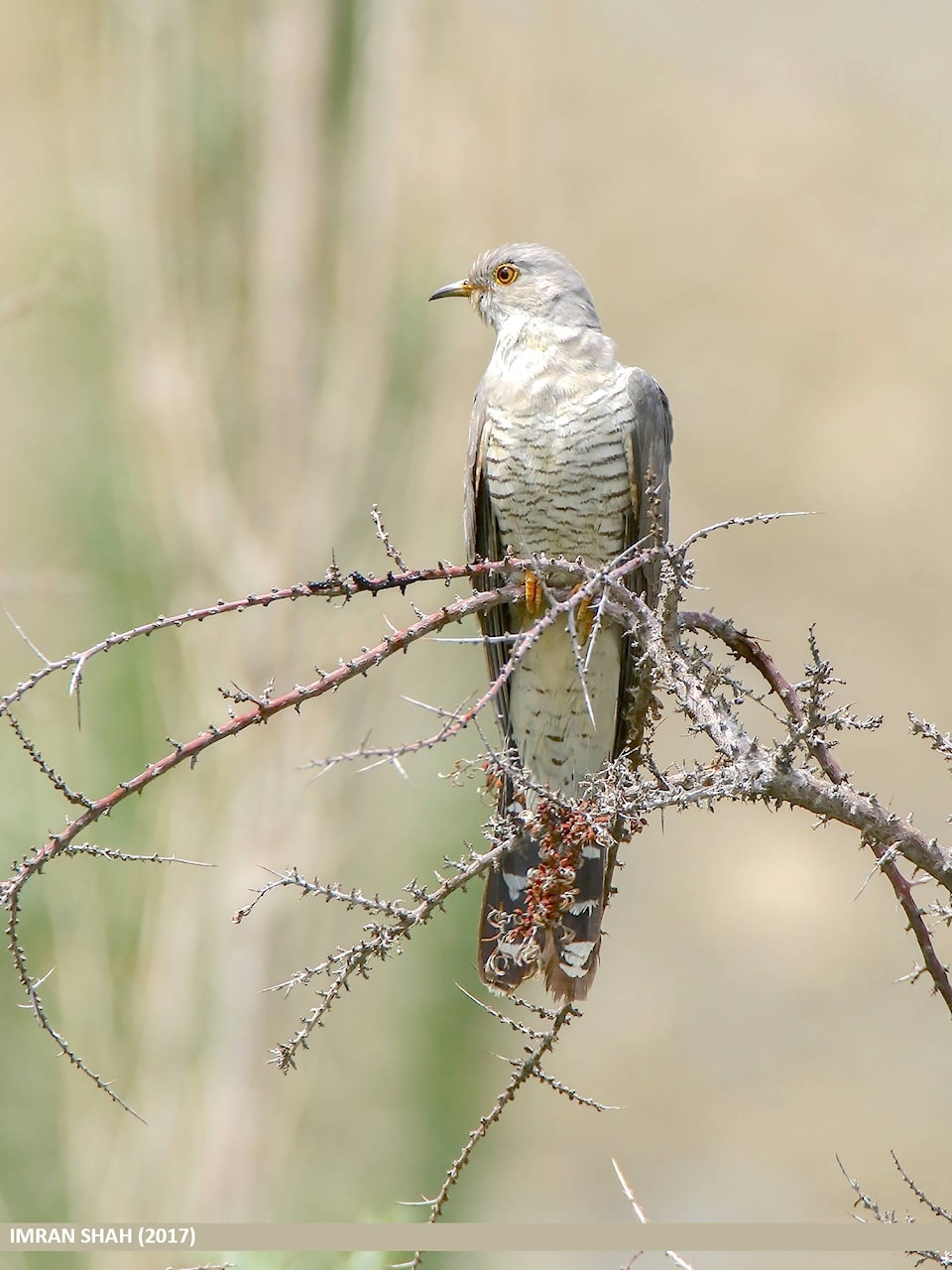By Margo Hearne
A fabulous bird showed up on Haida Gwaii recently. It appeared at Mike and Jane’s place in Tlell and Mike immediately knew it was something different. “I thought it was a hawk at first, but it had such a different bill and those legs and feet? Not at all like a hawk. I wanted to know what it was so I sent a photo to BC Birds and they told me it was a cuckoo-bird!”
It was definitely just that: a Eurasian Cuckoo or, as it’s known in North America, a Common Cuckoo. It’s fabulous, as in almost in the realm of fantasy; common it is definitely not. There have been a few records away out there on the Aleutian Islands and three years ago one was seen in Sitka, Alaska.
But this is a first for B.C. and, as far as our research shows to date, only the second record for Canada. It was wonderful to have a chance to see it. Mike and Jane were so hospitable and willing to have us hang around their place for hours on Friday. The Cuckoo was plainly visible for most of the afternoon. It went from fencepost to fencepost as it swooped down, picked up a bug and flew back to the fencepost. It seemed to have lots to eat and we watched from a distance for over an hour.
The sun was out, the afternoon was warm, the bird fed right in front of us and when we left it was still there. When a group of birders from Victoria and Vancouver arrived on Saturday they waited patiently along the grass verge to catch a glimpse of it, but the bird did not appear again and to our knowledge, it hasn’t been seen since.
It’s breeding bird survey season. Each year we do two surveys — one south along the highway from Masset for 40 kilometres and one from just outside Sandspit as far as Mosquito Lake. It is always a challenge. The highway from Masset to Port Clements is usually pretty busy and the weather iffy at best, but this year we did the count on Sunday. No traffic and wonderful weather. It was mild, calm and clear. Marbled Murrelets called across the inlet, flocks of Rhinoceros Auklets whipped low over the water and Swainson’s Thrushes sang out their summer song.
We had a lot to do in the short time given us. Stop every half-mile for 50 stops, remember to start the timer for three minutes, listen to and record every bird we see and hear and write it all down on our checklist. After doing it for a while we began to fade a little and that’s when it’s so important to have a companion along, to remind one another that we can’t just stand and listen, we have to write down as well, and to remember to separate out one song from another through the early morning orchestra.
We can get so mesmerized by the “trill” of the Varied Thrush that we stop actually hearing it and forget to note it. Warblers also — sometimes their song is so gentle we can’t hear it behind the wren’s long twittering chatter.
We can do the Masset count in about five hours from 4:30 to 9.30 a.m., but the Sandspit count takes much longer. All those birds in Skidegate Lake have to be recorded! Barrow’s Goldeneye with a tiny family in tow, a rare Yellow Warbler singing from across the burned-out trestle bridge, a Cedar Waxwing near Mosquito Lake. And then there are the bears. Big, black and beautiful.
